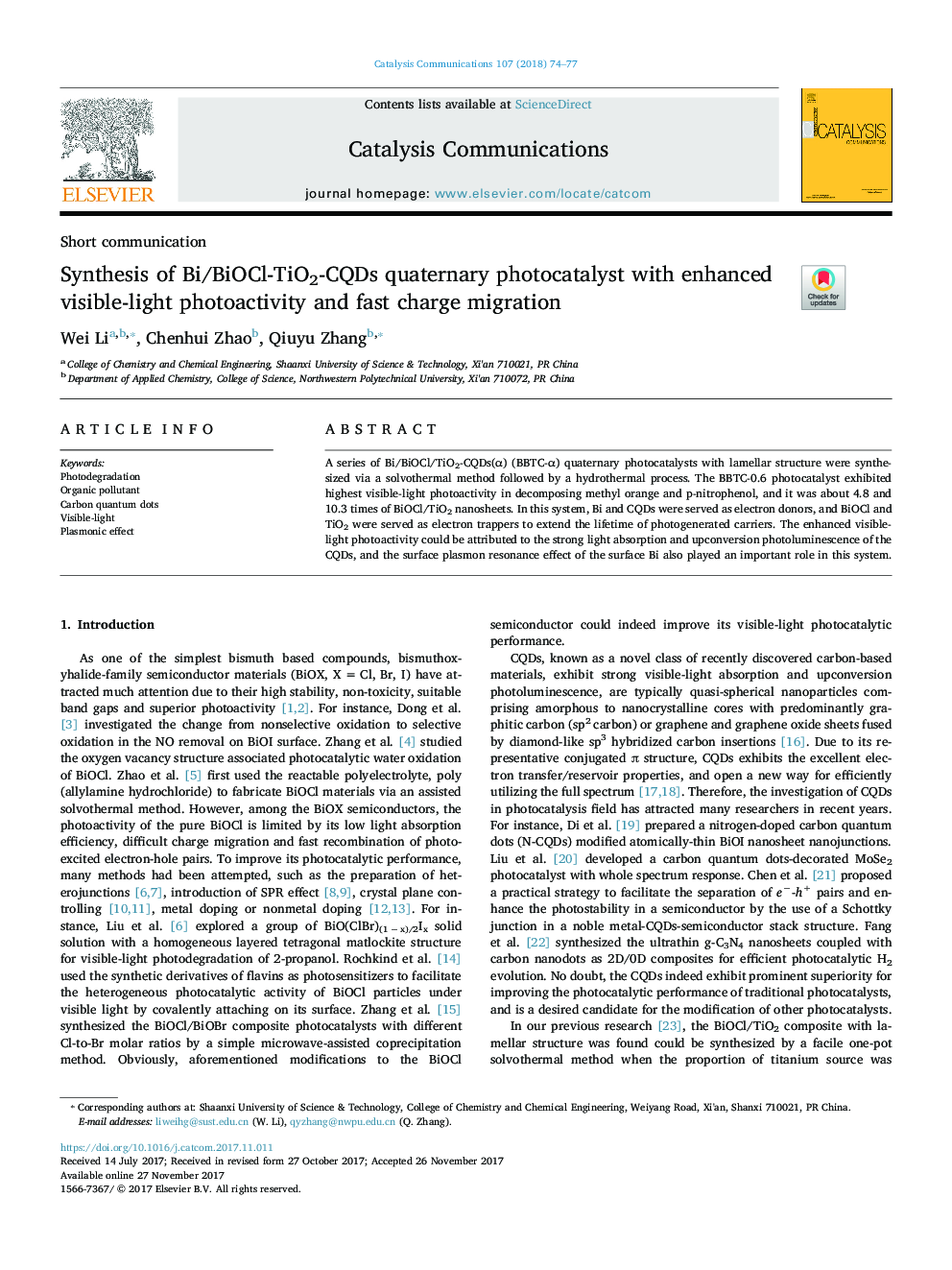| Article ID | Journal | Published Year | Pages | File Type |
|---|---|---|---|---|
| 6503099 | Catalysis Communications | 2018 | 4 Pages |
Abstract
A series of Bi/BiOCl/TiO2-CQDs(α) (BBTC-α) quaternary photocatalysts with lamellar structure were synthesized via a solvothermal method followed by a hydrothermal process. The BBTC-0.6 photocatalyst exhibited highest visible-light photoactivity in decomposing methyl orange and p-nitrophenol, and it was about 4.8 and 10.3 times of BiOCl/TiO2 nanosheets. In this system, Bi and CQDs were served as electron donors, and BiOCl and TiO2 were served as electron trappers to extend the lifetime of photogenerated carriers. The enhanced visible-light photoactivity could be attributed to the strong light absorption and upconversion photoluminescence of the CQDs, and the surface plasmon resonance effect of the surface Bi also played an important role in this system.
Related Topics
Physical Sciences and Engineering
Chemical Engineering
Catalysis
Authors
Wei Li, Chenhui Zhao, Qiuyu Zhang,
